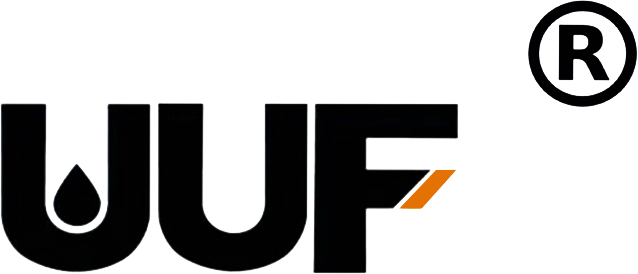Choosing the Right Mitsubishi Oil Seals for Your Vehicle's Needs
Time:
2025-11-03
Choosing the Right Mitsubishi Oil Seals for Your Vehicle's Needs Table of Contents Understanding Oil Seals Importance of Oil Seals in Vehicles Types of Mitsubishi Oil Seals Factors to Consider When Choosing Oil Seals How to Install Mitsubishi Oil Seals Maintaining Oil Seals for Longevity Common Issues with Oil Seals and Solutions Frequently Aske
Choosing the Right Mitsubishi Oil Seals for Your Vehicle's Needs
Table of Contents
- Understanding Oil Seals
- Importance of Oil Seals in Vehicles
- Types of Mitsubishi Oil Seals
- Factors to Consider When Choosing Oil Seals
- How to Install Mitsubishi Oil Seals
- Maintaining Oil Seals for Longevity
- Common Issues with Oil Seals and Solutions
- Frequently Asked Questions
Understanding Oil Seals
Oil seals, also known as rotary shaft seals, serve as critical components within your vehicle's engine and transmission systems. These seals play a pivotal role in preventing oil leakage from the engine parts and keeping contaminants out. Understanding their structure and function is vital for any vehicle owner.
Typically made from rubber or elastomeric materials, oil seals comprise several components, including a sealing lip, a metal insert, and an outer casing. The sealing lip is designed to create a tight fit against the shaft, minimizing oil leakage and protecting sensitive internal components.
Importance of Oil Seals in Vehicles
Oil seals are not mere accessories; they are essential for maintaining the integrity of your vehicle's engine. Their primary function is to ensure that oil remains within the designated areas, preventing leakage that can lead to serious engine problems. Here are some key reasons why oil seals are important:
- Prevent Oil Leakage: Oil seals effectively contain engine oil, preventing costly leaks that can lead to lower oil levels and potential engine wear.
- Protect Engine Components: By keeping contaminants out, oil seals help maintain the cleanliness of engine parts, prolonging their lifespan.
- Improve Vehicle Efficiency: A well-functioning oil seal contributes to better fuel efficiency as it ensures that the engine operates smoothly with adequate lubrication.
Types of Mitsubishi Oil Seals
Mitsubishi offers a variety of oil seals, each designed for specific applications and vehicle models. Understanding the different types can help you select the most suitable option for your needs. Here are some common types of Mitsubishi oil seals:
1. Engine Oil Seals
These seals are primarily used around the crankshaft and camshaft to prevent oil from leaking out of the engine. They are critical in maintaining oil pressure within the engine.
2. Transmission Oil Seals
Located at the input and output shafts of the transmission, these seals prevent transmission fluid from leaking and ensure efficient power transfer.
3. Differential Oil Seals
These seals are used in the differential housing to prevent gear oil from leaking. They are essential for maintaining lubrication in your vehicle’s driveline components.
Factors to Consider When Choosing Oil Seals
Choosing the right oil seal for your Mitsubishi vehicle involves several considerations to ensure compatibility and performance. Here are some crucial factors to keep in mind:
1. Vehicle Model and Year
Always check the specific requirements for your Mitsubishi model and year. Different models may require different oil seals due to variations in design and engine specifications.
2. Material Quality
The material of the oil seal affects its durability and performance. Look for high-quality rubber or elastomer materials that can withstand temperature fluctuations and resist wear.
3. Seal Size and Dimensions
Ensure that the size and dimensions of the oil seal match the specifications of your vehicle. A misfit can lead to leaks and potential engine damage.
4. Application
Different applications may require specific features in oil seals. For example, seals used in high-performance engines may need to have enhanced sealing capabilities.
5. Manufacturer Reputation
Opt for reputable manufacturers like Mitsubishi, as they have a history of producing reliable and effective oil seals designed specifically for their vehicles.
How to Install Mitsubishi Oil Seals
Proper installation of oil seals is crucial for their effectiveness. Here’s a step-by-step guide to help you install Mitsubishi oil seals correctly:
Step 1: Gather Necessary Tools
Before you start, gather the necessary tools, including a seal installation tool, a hammer, and a clean cloth for wiping surfaces.
Step 2: Prepare the Area
Clean the sealing surface thoroughly to remove any dirt or debris. Check for any signs of damage that might affect the new seal’s performance.
Step 3: Lubricate the Seal
Apply a thin layer of lubricant to the sealing lip of the new oil seal. This helps in easy installation and ensures a better seal.
Step 4: Position the Seal
Carefully position the oil seal over the mounting area. Use the installation tool to tap the seal into place gently. Be cautious not to damage the seal during this process.
Step 5: Verify Installation
Once installed, double-check that the seal is flush with the surface and properly seated. There should be no gaps or misalignment.
Maintaining Oil Seals for Longevity
To ensure the longevity and effectiveness of your Mitsubishi oil seals, regular maintenance and inspection are vital. Here are some tips to keep in mind:
- Regular Inspections: Check for signs of oil leakage or wear regularly, especially after long trips or during scheduled maintenance.
- Use Quality Fluids: Always use the recommended oil and fluids for your vehicle to prevent premature seal degradation.
- Monitor Operating Temperature: Ensure that your vehicle does not consistently operate at extreme temperatures, as this can affect seal performance.
Common Issues with Oil Seals and Solutions
Despite their longevity, oil seals can encounter issues. Here are some common problems and their solutions:
1. Oil Leakage
If you notice oil pooling under your vehicle, it may indicate a failed oil seal. Inspect the seals and replace them if necessary.
2. Excessive Wear
Signs of excessive wear could include cracks or hardening of the rubber. Regular inspections can help identify these issues early.
3. Misalignment
A misaligned oil seal can lead to leakage. If this occurs, you may need to reposition or replace the seal.
Frequently Asked Questions
1. How do I know if my oil seal needs replacing?
Look for signs of oil leakage, cracks, or wear on the seals. If your vehicle is losing oil or exhibiting unusual engine noises, it may be time to replace your oil seals.
2. Can I install oil seals myself?
Yes, with the right tools and instructions, you can install oil seals yourself. However, if you're unsure, it's best to consult a professional mechanic.
3. What are the signs of a bad oil seal?
Common signs of a failing oil seal include oil leaks, engine overheating, and unusual noises from the engine compartment.
4. How long do oil seals last?
The lifespan of oil seals can vary, but with proper maintenance, they can last several years. Regular inspections will help catch any potential issues early.
5. Are aftermarket oil seals as good as OEM seals?
While some aftermarket seals can be of good quality, OEM (Original Equipment Manufacturer) seals are specifically designed for your vehicle and often provide better reliability and performance.
Conclusion
Choosing the right Mitsubishi oil seals for your vehicle is crucial for maintaining optimal performance and preventing costly repairs. By understanding the types of oil seals, their importance, and factors to consider when selecting them, you can ensure that your vehicle runs smoothly for years to come. Regular maintenance and prompt replacement of worn-out seals will further enhance your vehicle’s reliability and efficiency. Equip yourself with the knowledge from this guide, and take proactive steps to care for your Mitsubishi vehicle’s oil seals today.
Keyword:
Mitsubishi oil seal


















